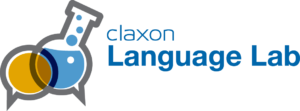 [The Language Lab makes it easy for you to put research to work for you and your mission. Each installment gives you research-backed intel on one specific way you can work happier, smarter, and more effectively. To stay in the know, sign up to get Language Lab missives delivered directly to your inbox.]
[The Language Lab makes it easy for you to put research to work for you and your mission. Each installment gives you research-backed intel on one specific way you can work happier, smarter, and more effectively. To stay in the know, sign up to get Language Lab missives delivered directly to your inbox.]
********************
The One Thing You Need to Know: Get out and meet people! Meeting someone who will benefit from your work will increase your perseverance, long-term motivation, and success.
Your Motivation Mojo
Motivation is elusive.
For instance, you get all pumped up to work out five days a week. It all starts off really well. You kickbox and yoga the heck out of your newly minted gym pass and jaunty workout gear, yes you do. Quite a week. Motivation mojo is in awesome mode.
Fast-forward to week three. It is 6AM. Your BodyCombat class starts in 30 minutes and rather than donning your workout gear, you stare lovingly at the snooze button…
Zap! Just like that, your motivation mojo goes missing.
This happens in all aspects of our lives. It’s one thing to lose your gym mojo. It’s another thing to lose your work mojo. Because in your line of work, when you lose your mojo, the people you serve lose out as well.
Want to know something magical? You can keep your motivation mojo motivated simply by meeting someone that your work benefits. This is true for you, your staff, your volunteers, your board–everyone. Indeed, this motivation trick works on everyone, regardless of their role.
Researchers did a series of experiments on people working in a fundraising organization. These folks raised money by working the phones. In the experiment, one group interacted briefly with a beneficiary. The other group read a letter from a beneficiary and talked about the letter amongst themselves, i.e. no contact.
Guess what? A month later, the group that read the letter saw basically no difference in persistence or job performance. However–and this is a BIG however–the group that interacted with the beneficiary showed way more persistence (142% more phone time) and job performance (171% more money raised).
IMPORTANT NOTE: Although this research took place in a fundraising organization, the researchers were not thinking of this as advancing an understanding of fundraising. No, they were looking at it through the lens of organizational psychology and the importance of word design to increase task significance and thereby motivation and effectiveness. So, yes, it applies to fundraising. But the application is much broader and, therefore, more widely relevant.
Want more on motivation?
- Read the study, Impact and the Art of Motivation Maintenance, right here.
- If you find yourself needing the motivation to write, go meet a beneficiary, and then turn on Written Kitten. Right your little heart out!
- Try out a Pomodora Timer. (I am a big fan of the ‘Awwesome’ option. Go ahead, try it.)
*****
Did you hear about the August 24th, FREE Words on a Mission Webinar we are hosting? You can sign up here.










